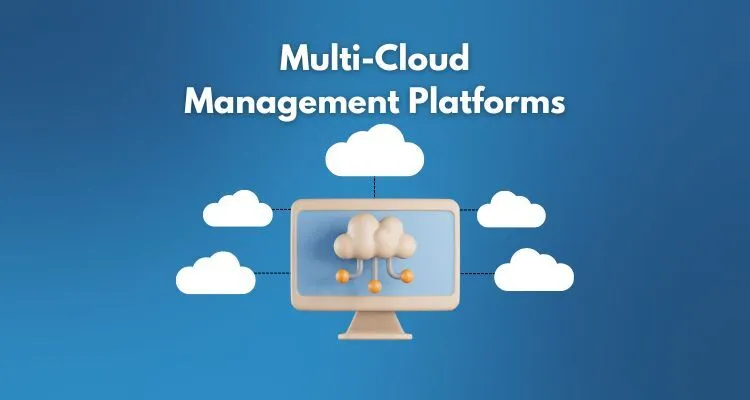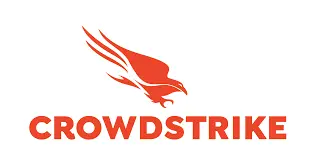- Home
- -Blog
Comprehensive Guide to Multi-Cloud Management Platforms

- 15 May 2024
- Admin
Introduction to Multi-Cloud Management Platforms
Definition of Multi-Cloud Management
Multi-Cloud Management involves overseeing and optimizing multiple cloud services from different providers through a unified platform. This approach allows businesses to efficiently manage their cloud resources, ensuring seamless integration, consistent performance, and cost-effectiveness. The goal is to provide a comprehensive view of all cloud environments, enabling better control and decision-making.
Importance in the Modern Enterprise
Enterprises are increasingly relying on cloud services to support their operations. Multi-Cloud Management offers several critical benefits:
- Risk Mitigation: By distributing workloads across multiple cloud providers, businesses can reduce the risk of downtime and service interruptions.
- Cost Efficiency: Enterprises can choose the most cost-effective services from different providers, optimizing their spending.
- Flexibility and Innovation: Leveraging diverse cloud features and services can enhance flexibility and drive innovation within the organization.
Essential Features of Multi-Cloud Management Platforms
Centralized Dashboard for Unified Control
A centralized dashboard is a core feature of multi-cloud management platforms, providing a single interface to monitor and manage various cloud services. This unified control panel simplifies the management of different cloud environments, allowing IT teams to oversee operations, track performance, and respond to issues quickly. By consolidating information from multiple clouds, businesses can achieve better visibility and streamline their cloud operations.
Automation Tools for Efficiency
Automation tools are crucial for enhancing efficiency in multi-cloud management. These tools can automate repetitive tasks, such as resource provisioning, scaling, and load balancing. Automation reduces manual intervention, minimizes errors, and accelerates deployment times. For instance, platforms like VMware and AWS offer robust automation capabilities that help organizations maintain consistent performance and optimize resource utilization across multiple clouds.
Cost Management and Optimization Features
Effective cost management is essential to prevent overspending in a multi-cloud environment. Multi-cloud management platforms provide features to track and analyze cloud expenses, offering insights into cost distribution and identifying opportunities for optimization. These platforms can suggest cost-saving measures, such as moving workloads to more cost-effective services or eliminating unused resources. Tools like AWS Cost Explorer and IBM's cost management solutions are designed to help businesses control their cloud spending efficiently. Additionally, spend management software can be integrated with these platforms to provide a more granular and automated approach to budgeting, forecasting, and financial accountability across multiple cloud services, ensuring that organizations stay within budget while maximizing performance.
Security and Compliance Capabilities
Security and compliance are top priorities in multi-cloud management. Platforms must provide robust security features to protect data and applications across different cloud providers. This includes enforcing security policies, managing user access, and ensuring compliance with industry standards and regulations. Equally important is the secure issuance, renewal, and revocation of machine identities, which play a critical role in authenticating workloads and services. Comprehensive security tools help in monitoring and mitigating threats, while compliance features ensure that all cloud services adhere to necessary legal and regulatory requirements. CrowdStrike and Cloudflare are examples of providers that offer strong security and compliance capabilities within their multi-cloud management solutions.
Performance Monitoring and Analytics
Performance monitoring and analytics tools are vital for maintaining the health and efficiency of cloud environments. These tools provide real-time insights into the performance of applications and infrastructure, helping IT teams to identify and resolve issues promptly. Analytics features enable businesses to track key performance indicators (KPIs), analyze trends, and make data-driven decisions to optimize their cloud resources. Platforms like IBM and AWS offer advanced monitoring and analytics capabilities that ensure consistent and reliable cloud performance.
Leading Multi-Cloud Management Platforms
a.)Cloudflare:

Cloudflare offers robust multi-cloud management solutions aimed at enhancing security and performance across different cloud environments. Their platform provides tools for connecting, protecting, and building applications seamlessly across multiple clouds. Key features include:
- Connect: Centralized control to manage traffic, ensuring reliability and performance.
- Protect: Comprehensive security solutions, including DDoS protection, WAF, and firewall capabilities.
- Build: Tools for developers to build and deploy applications across various cloud platforms.
Cloudflare's integrated approach simplifies multi-cloud management by offering a single platform for security, performance, and development needs.
b.)VMware:

VMware specializes in providing comprehensive solutions for managing multiple cloud environments, focusing heavily on Kubernetes and container technologies. Their multi-cloud management platform includes:
- VSphere with Tanzu: Enables enterprises to run Kubernetes clusters alongside traditional applications.
- VMware Cloud Foundation: Provides a unified platform for managing private and public clouds.
- VMware Tanzu: A suite of products to build, run, and manage Kubernetes-controlled containerized applications.
VMwar's solutions facilitate efficient multi-cloud management by enabling seamless integration and consistent management across different cloud platforms.
c.)AWS:

Amazon Web Services (AWS) offers a comprehensive suite of tools for managing hybrid and multi-cloud environments. Their platform includes:
- AWS Systems Manager: Provides a unified interface for managing resources across AWS and on-premises environments.
- AWS IAM: Securely manages identities and permissions across different cloud services.
- AWS Cost Explorer: Helps in tracking and optimizing cloud spending.
AWS's focus on automation and unified control simplifies the complexity of multi-cloud management, ensuring efficient and secure operations across various cloud platforms.
d.)IBM:

IBM leverages AI and machine learning to provide advanced multi-cloud management solutions. Key components include:
- IBM Multicloud Manager: Offers centralized visibility and control over multi-cloud environments.
- AI-Powered Automation: Uses AI to automate repetitive tasks and optimize resource utilization.
- Security and Compliance: Ensures consistent security policies and compliance across all cloud services.
IBM's AI-driven approach enhances visibility and control, making it easier for enterprises to manage complex multi-cloud setups efficiently.
e.)CrowdStrike:

CrowdStrike focuses on addressing the security challenges inherent in multi-cloud environments. Their platform provides:
- Falcon Platform: Offers advanced threat detection and response capabilities.
- Unified Security Tools: Consolidates security tools into a single platform, ensuring comprehensive protection.
- Best Practices for Security: Provides guidelines and tools to maintain consistent security policies across multiple clouds.
CrowdStrike's emphasis on security ensures that enterprises can protect their multi-cloud environments from various threats, maintaining a robust security posture.
Advantages of Using Multi-Cloud Management Platforms
Enhanced Flexibility and Agility
Multi-cloud management platforms provide businesses with the flexibility to choose the best cloud services for their needs. By leveraging multiple cloud providers, companies can avoid vendor lock-in and take advantage of each provider's strengths. This approach allows for a more agile IT infrastructure, where businesses can quickly adapt to changing requirements and market conditions. For instance, enterprises can deploy applications on the cloud that best suits their performance or cost needs, thereby enhancing operational agility.
Cost Savings through Optimization
Cost optimization is a significant benefit of using multi-cloud management platforms. These platforms offer tools to monitor and analyze cloud spending, helping businesses identify inefficiencies and areas for cost reduction. By optimizing resource usage and selecting cost-effective services, companies can significantly reduce their cloud expenditure. Platforms like AWS Cost Explorer and IBM's cost management tools provide detailed insights into cloud costs, enabling more informed financial decisions.
Improved Security and Compliance
Managing security and compliance across multiple cloud environments can be challenging. Multi-cloud management platforms address this by offering comprehensive security features that ensure consistent enforcement of security policies across all cloud services. These platforms integrate various security tools to protect data and applications from threats. Additionally, they help businesses meet regulatory requirements by providing tools for compliance management. Providers like CrowdStrike and Cloudflare offer robust security solutions to maintain a strong security posture across multi-cloud environments.
Increased Reliability and Uptime
Using multiple cloud providers can enhance the reliability and uptime of applications and services. Multi-cloud management platforms enable businesses to distribute workloads across different clouds, reducing the risk of downtime due to service outages. This redundancy ensures that if one cloud provider experiences issues, the workload can be shifted to another provider without interruption. This approach increases overall system reliability and ensures continuous availability of critical applications.
Streamlined Management and Operations
Managing multiple cloud environments can be complex and time-consuming. Multi-cloud management platforms simplify this by providing a centralized dashboard to oversee all cloud resources. This unified interface allows IT teams to monitor, manage, and optimize cloud operations efficiently. Automation tools within these platforms further streamline operations by automating routine tasks such as resource provisioning, scaling, and load balancing. By reducing manual intervention and operational complexity, businesses can achieve greater efficiency and productivity.
Overcoming Challenges in Multi-Cloud Management
Integration of Disparate Cloud Services
Integration is one of the most significant challenges in multi-cloud management. Different cloud providers have unique architectures, APIs, and management tools, making it difficult to create a seamless environment. To overcome this, businesses can:
- Standardize APIs and Interfaces: Using standardized APIs and management interfaces helps create a uniform integration layer, simplifying the management of disparate cloud services.
- Adopt Containers and Kubernetes: Containers and orchestration tools like Kubernetes facilitate the deployment and management of applications across multiple clouds by providing a consistent runtime environment.
- Use Middleware Solutions: Middleware can act as an intermediary, enabling communication and data exchange between different cloud services and applications.
Mitigating Security Risks
Security is a top concern in multi-cloud environments due to the varied security controls and policies of different providers. To mitigate these risks, businesses should:
- Implement Unified Security Policies: Consistent security policies across all cloud environments ensure a unified security posture. Tools like those offered by CrowdStrike help enforce these policies across multiple clouds.
- Employ Comprehensive Security Tools: Use advanced security tools that provide visibility and protection across all cloud services, such as firewalls, intrusion detection systems, and threat intelligence platforms.
- Regular Security Audits: Conduct regular security audits and assessments to identify and address vulnerabilities promptly.
Managing Complex Cloud Environments
Complexity in managing multiple cloud environments can lead to inefficiencies and increased risk of errors. To manage this complexity:
- Centralized Management Platforms: Utilize platforms that provide a single dashboard for monitoring and managing all cloud services, reducing the complexity of handling multiple interfaces.
- Automation: Leverage automation tools to streamline routine tasks such as provisioning, scaling, and monitoring. Automation reduces the risk of human error and enhances operational efficiency.
- Documentation and Training: Maintain comprehensive documentation and provide ongoing training for IT staff to ensure they are proficient in managing complex multi-cloud environments.
Addressing Skill Gaps in IT Teams
Skill gaps within IT teams can hinder effective multi-cloud management. To address these gaps:
- Training and Certification Programs: Invest in training and certification programs for IT staff to ensure they have the necessary skills and knowledge to manage multi-cloud environments effectively.
- Hiring Specialists: Consider hiring cloud specialists with expertise in multi-cloud management to bridge the skill gap and bring in specialized knowledge.
- Collaboration with Managed Service Providers (MSPs): Partnering with MSPs can provide access to expert resources and support, helping to manage multi-cloud environments more effectively.
Best Practices for Effective Multi-Cloud Management
Standardizing Processes and Tools Across Clouds
Standardizing processes and tools is essential for managing multiple cloud environments efficiently. By creating uniform procedures and using consistent tools, businesses can reduce complexity and improve interoperability. Best practices include:
- Use of Unified Management Tools: Adopting tools that work across different cloud providers ensures a seamless management experience. For example, VMware and IBM provide platforms that offer standardized management capabilities across various clouds.
- Establishing Common Protocols: Standardize APIs, security protocols, and data management practices to ensure consistency and interoperability between different cloud environments.
Implementing Comprehensive Security Measures
Robust security is crucial in a multi-cloud setup. Comprehensive security measures help protect data and applications from threats. Best practices include:
- Unified Security Policies: Develop and enforce consistent security policies across all cloud environments to maintain a uniform security posture. CrowdStrike emphasizes the importance of having a cohesive approach to security across multiple clouds.
- Regular Audits and Assessments: Conduct regular security audits to identify and mitigate potential vulnerabilities. Continuous assessment helps maintain security integrity.
- Advanced Security Tools: Utilize advanced security tools like firewalls, intrusion detection systems, and threat intelligence platforms to enhance protection across all cloud services.
Continuous Monitoring and Performance Optimization
Continuous monitoring and performance optimization are vital for ensuring the health and efficiency of multi-cloud environments. Best practices include:
- Real-Time Monitoring Tools: Implement tools that provide real-time monitoring and analytics of cloud performance. Platforms like AWS and IBM offer advanced monitoring solutions that help track and optimize performance.
- Regular Performance Reviews: Conduct regular reviews of cloud performance to identify areas for improvement and ensure optimal resource utilization. This helps in maintaining high levels of service availability and reliability.
Training and Upskilling IT Personnel
Training and upskilling IT personnel are critical to managing multi-cloud environments effectively. Best practices include:
- Ongoing Training Programs: Invest in continuous training programs to keep IT staff updated on the latest multi-cloud management practices and technologies.Invest in continuous training programs and use mentoring software to keep IT staff updated on the latest multi-cloud management practices and technologies. VMware and IBM provide extensive training and certification programs to help businesses upskill their teams.
- Certification Courses: Encourage IT personnel to pursue certification courses that validate their expertise in multi-cloud management. This ensures that the team is equipped with the necessary skills to handle complex cloud environments.
Leveraging Automation for Efficiency
Automation is a key factor in achieving efficiency in multi-cloud management. Best practices include:
- Automating Routine Tasks: Use automation tools to handle routine tasks such as provisioning, scaling, and load balancing. This reduces manual intervention and minimizes the risk of errors.
- Integrating AI and Machine Learning: Incorporate AI and machine learning into automation processes to enhance decision-making and optimize resource management. IBM's AI-driven automation tools are an excellent example of how automation can improve efficiency in multi-cloud environments.
Future Trends in Multi-Cloud Management
Emerging Technologies and Innovations
The field of multi-cloud management is rapidly evolving, with several emerging technologies and innovations set to shape its future. Key trends include:
- AI and Machine Learning: These technologies are increasingly being integrated into multi-cloud management platforms to enhance automation, optimize resource allocation, and improve security. AI-driven analytics can predict potential issues before they occur, allowing for proactive management.
- Serverless Computing: This approach abstracts the underlying infrastructure, enabling developers to focus on code while the cloud provider manages the rest. Serverless architectures are expected to become more prominent, offering greater scalability and cost-efficiency.
- Edge Computing: With the rise of IoT devices, edge computing is becoming crucial. It allows data processing closer to the source, reducing latency and bandwidth use. Multi-cloud platforms will increasingly support edge computing to provide faster and more reliable services.
- Enhanced Security Technologies: Innovations in security, such as zero-trust architectures and advanced encryption methods, will play a critical role in protecting multi-cloud environments from evolving cyber threats.
Predictions for the Next Five Years
Over the next five years, several key developments are anticipated in multi-cloud management:
- Increased Adoption: More businesses will adopt multi-cloud strategies to leverage the best features of different cloud providers, driven by the need for flexibility, reliability, and cost optimization.
- Integration of Advanced Analytics: Enhanced analytics capabilities will become standard, providing deeper insights into cloud performance and usage, helping businesses make data-driven decisions.
- Greater Interoperability: Efforts to improve interoperability between cloud providers will intensify, enabling smoother integration and management of multi-cloud environments. This will be facilitated by industry standards and open-source tools.
- Focus on Sustainability: Cloud providers and businesses will prioritize sustainability, optimizing their cloud operations to reduce carbon footprints. Multi-cloud management platforms will incorporate features to monitor and improve environmental impact.
- Expansion of Hybrid Cloud Solutions: The lines between public, private, and hybrid clouds will blur further, with more comprehensive hybrid cloud solutions emerging. These solutions will offer seamless integration between on-premises and cloud resources.
Strategies for Staying Ahead in Multi-Cloud Management
To stay ahead in the dynamic landscape of multi-cloud management, businesses should consider the following strategies:
- Continuous Learning and Adaptation: Stay updated with the latest developments in cloud technology. Regular training and certification programs for IT staff will ensure that the team remains proficient in new tools and practices.
- Proactive Security Measures: Implement advanced security measures and maintain a proactive approach to threat detection and response. Regularly update security protocols to address emerging threats.
- Optimize for Performance and Cost: Use advanced analytics and automation tools to continuously monitor and optimize cloud performance and costs. This includes leveraging AI and machine learning to predict and mitigate potential issues.
- Embrace Hybrid and Edge Computing: Incorporate hybrid and edge computing into the multi-cloud strategy to enhance flexibility, reduce latency, and improve service reliability.
- Focus on Sustainability: Integrate sustainability goals into the cloud strategy by using tools that monitor and optimize the environmental impact of cloud operations.
Conclusion
Multi-cloud management platforms are critical for modern enterprises looking to maximize the benefits of cloud computing. They offer the tools and capabilities needed to manage complex cloud environments efficiently, ensuring optimal performance, security, and cost-effectiveness. By adopting best practices and staying ahead of emerging trends, businesses can effectively navigate the complexities of multi-cloud management and achieve their strategic goals.
Multi-cloud management is not just a trend; it is a necessity for organizations aiming to stay competitive and resilient. Embracing these platforms will empower businesses to innovate, adapt, and thrive in an increasingly cloud-centric world.



